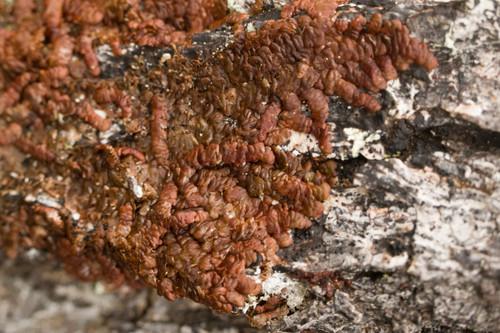
Oligotrichum-aligerum-Mitt-A-Habit-moist-B-Male-plant-with-perigonial-leaves-C_Q640.jpg from: https://www.researchgate.net/figure/Oligotrichum-aligerum-Mitt-A-Habit-moist-B-Male-plant-with-perigonial-leaves-C_fig3_326282845
Exploring the Fascinating World of Oligotrichum aligerum Moss

11061911173_ecda0a575a_z.jpg from: https://www.flickr.com/photos/36846029@N06/11061911173/
Introduction
Mosses are small but mighty plants that play crucial roles in ecosystems around the world. One particularly interesting species is Oligotrichum aligerum Mitt., a moss in the Polytrichaceae family. Also known simply as Oligotrichum, this moss has some unique features that make it stand out. In this blog post, we’ll dive into the details of Oligotrichum aligerum and explore what makes it so fascinating.

medium.jpg from: https://www.inaturalist.org/taxa/156690-Oligotrichum

Oligotrichum-semilamellatum-Hookf-Mitt-A-Habit-moist-B-Perichaetial-leaf-in.png from: https://www.researchgate.net/figure/Oligotrichum-semilamellatum-Hookf-Mitt-A-Habit-moist-B-Perichaetial-leaf-in_fig8_326282845
Background
Oligotrichum aligerum is a species of moss in the Polytrichopsida class of Bryophyta (mosses). The Polytrichaceae family contains some of the most complex and evolutionarily advanced mosses. Oligotrichum gets its name from the Greek words “oligos” meaning few and “trichos” meaning hair, referring to the small number of hairs on the calyptra (the cap covering the capsule).

93-D12%2B1516311854.JPG from: https://v3.boldsystems.org/index.php/Taxbrowser_Taxonpage?taxid=411114
Morphology and Identification
Oligotrichum aligerum forms small tufts or cushions, typically

859852.jpg from: https://www.bio-forum.pl/messages/3280/859850.html
1-3 cm tall. The leaves are lanceolate (lance-shaped) and have toothed margins near the tip. A key identifying feature is the reddish-brown, cylindrical capsule that emerges on a tall

small-hair-moss.jpg from: https://evstnaturalhistory.wordpress.com/2011/05/24/832/
seta (stalk). The capsule has a small peristome (ring of teeth) and is covered by a hairy calyptra when young.
Global Distribution and Habitat
Oligotrichum aligerum has a wide distribution, found in many parts of Europe, Asia, Africa, and the Americas. It typically grows on exposed, acidic soils such as clay banks, road cuts, and disturbed areas. It can also be found in rock crevices and on rotting logs in forests.
Ecological Roles and Adaptations
Like other mosses, Oligotrichum plays important roles in its ecosystem:

Oligotrichum-aligerum-lamellae-web-400×300.jpg from: https://blogs.ubc.ca/biology321/?page_id=2158
- Erosion control: The dense tufts help stabilize soil and prevent erosion.
- Water retention: Moss cushions absorb and retain water, regulating moisture in the environment.
- Nutrient cycling: As mosses decompose, they release nutrients back into the soil.
- Habitat for microorganisms: The spaces between moss plants provide habitat for diverse microorganisms and invertebrates.
Oligotrichum has adaptations that allow it to thrive in its preferred habitats:
- Desiccation tolerance: It can survive periods of dryness by going dormant until moisture returns.
- Spore dispersal: The tall seta elevates the capsule to facilitate wind dispersal of the spores.
- Asexual reproduction

Oligotrichum-canaliculatum-a-Gametophyte-b-d-Leaves-e-f-Perichaetial-leaves-g.png from: https://www.researchgate.net/figure/Oligotrichum-canaliculatum-a-Gametophyte-b-d-Leaves-e-f-Perichaetial-leaves-g_fig4_232670414
: In addition to spores, it can reproduce asexually via regeneration from leaf fragments.
Conclusion
Oligotrichum aligerum may be small, but it is a remarkable and important plant. From its unique morphology to its ecological roles, this mighty moss deserves appreciation. Next time you’re out in nature, take a closer look – you might just spot some Oligotrichum making its mark on the world. What other small wonders of nature have you discovered?

Oligotrichum-crossidioides-PCChen-TLWan-ex-WXXu-RLXiong-A-Habit-moist_Q320.jpg from: https://www.researchgate.net/figure/Distribution-of-Oligotrichum-crossidioides-PCChen-TLWan-ex-WXXu-RLXiong-in_fig2_326282845